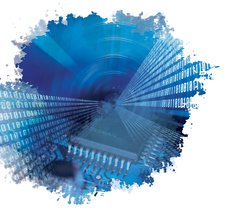Make off-site backups or you will lose your data
Backup Pains

Who needs attackers when you have system administrators? Learn why copying your data doesn't mean you've backed it up.
As I write this column, I cannot help but reflect on the irony of just having wiped out a month's worth of data. In the spirit of this article, I was fiddling around with backups on my web server, and I managed to accidentally delete most of /var/ and all of the /home/ directory. This wouldn't have been so bad if I hadn't kept the daily backups in /home/backups/. Oops.
Backing Up Doesn't Always Mean You Have Backups
If your data isn't available, or the systems to process and serve it aren't available, you have a problem. In the case of my web server, the missing /var/ and /home/ render it pretty much useless. It serves 404s and that's pretty much it. To make sure data is available, you need to back it up. Seems simple right? In reality most of us (myself included) get it wrong, and although we go through the motions of making a backup, what we're really doing is just copying the data somewhere else that is equally vulnerable to loss.
In my case, I made a classic mistake of storing my backups on the same system that the data being backed up is on, and to make things worse, I actually kept it in a commonly accessed directory. Not that this would have mattered. Because the server only has one hard drive, I am only a single disk failure away from complete data loss no matter how much I back my data up locally on the server. Even if I were to install a second hard drive in the machine, it's still all too easy for a single event (bad drive controller, attacker wiping the system, fire, flood, power supply going bonkers, theft, etc.) to wipe out more than one hard drive.
[...]
Buy this article as PDF
(incl. VAT)
Buy Linux Magazine
Subscribe to our Linux Newsletters
Find Linux and Open Source Jobs
Subscribe to our ADMIN Newsletters
Support Our Work
Linux Magazine content is made possible with support from readers like you. Please consider contributing when you’ve found an article to be beneficial.

News
-
Parrot OS Switches to KDE Plasma Desktop
Yet another distro is making the move to the KDE Plasma desktop.
-
TUXEDO Announces Gemini 17
TUXEDO Computers has released the fourth generation of its Gemini laptop with plenty of updates.
-
Two New Distros Adopt Enlightenment
MX Moksha and AV Linux 25 join ranks with Bodhi Linux and embrace the Enlightenment desktop.
-
Solus Linux 4.8 Removes Python 2
Solus Linux 4.8 has been released with the latest Linux kernel, updated desktops, and a key removal.
-
Zorin OS 18 Hits over a Million Downloads
If you doubt Linux isn't gaining popularity, you only have to look at Zorin OS's download numbers.
-
TUXEDO Computers Scraps Snapdragon X1E-Based Laptop
Due to issues with a Snapdragon CPU, TUXEDO Computers has cancelled its plans to release a laptop based on this elite hardware.
-
Debian Unleashes Debian Libre Live
Debian Libre Live keeps your machine free of proprietary software.
-
Valve Announces Pending Release of Steam Machine
Shout it to the heavens: Steam Machine, powered by Linux, is set to arrive in 2026.
-
Happy Birthday, ADMIN Magazine!
ADMIN is celebrating its 15th anniversary with issue #90.
-
Another Linux Malware Discovered
Russian hackers use Hyper-V to hide malware within Linux virtual machines.

